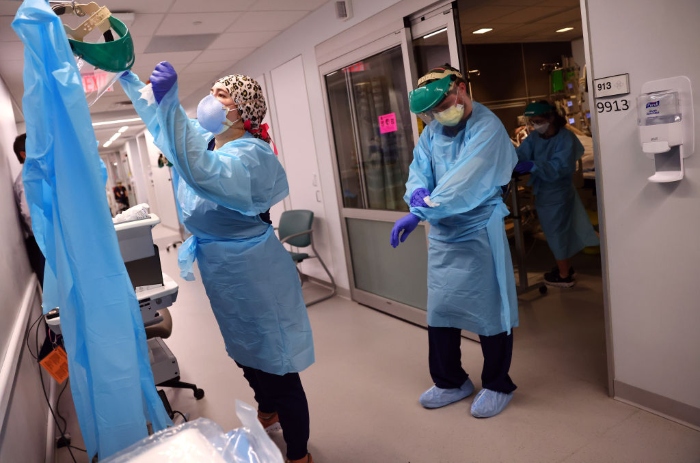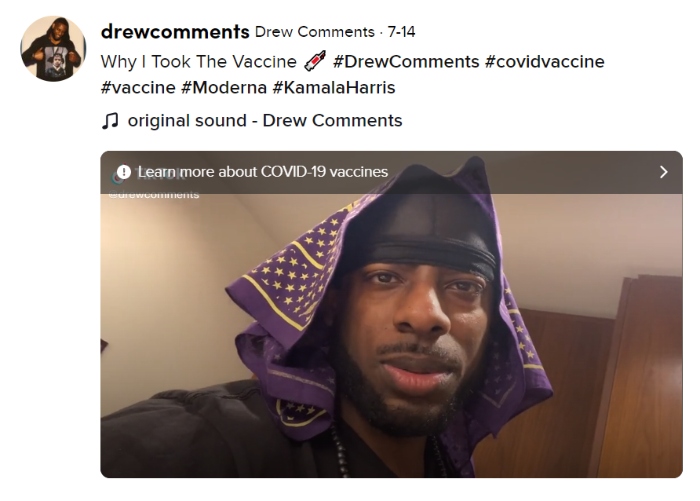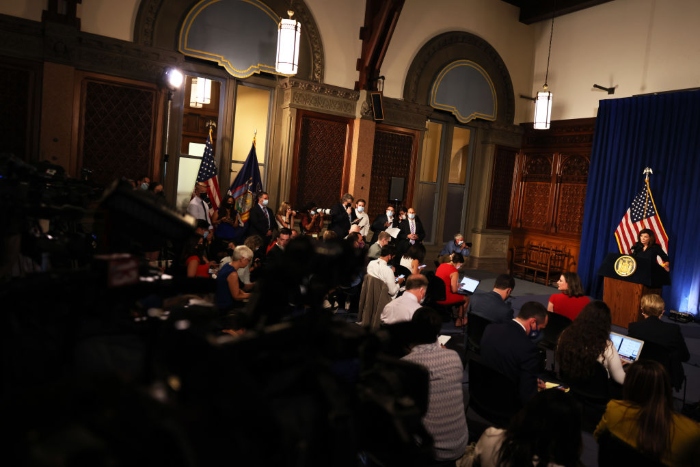Every day is a new, very consequential battle for the basic funding RSN needs to survive. The hard, cold reality is that if we loose our intensity on funding even for a day, we won’t have any funding.
Match our intensity. Please.
Marc Ash
Founder, Reader Supported News
If you would prefer to send a check:
Reader Supported News
PO Box 2043 / Citrus Heights, CA 95611
Follow us on facebook and twitter!
Live on the homepage now!
Reader Supported News
The 20-year conflict was a boon to the military-industrial complex, at the cost of untold lives.
 hese words, penned by Major General Smedley Butler in 1935, nearly a century before the global war on terrorism began, decades before the notion of a “military-industrial complex” became a glint in Dwight Eisenhower’s imagination, could sum up the last 20 years of war in Afghanistan. Butler’s tract gives a good answer to one of the basic questions of war: Who benefits?
hese words, penned by Major General Smedley Butler in 1935, nearly a century before the global war on terrorism began, decades before the notion of a “military-industrial complex” became a glint in Dwight Eisenhower’s imagination, could sum up the last 20 years of war in Afghanistan. Butler’s tract gives a good answer to one of the basic questions of war: Who benefits?
This question should be central to our interrogation of this moment, as our withdrawal from Afghanistan sets off a paroxysm of recriminations about how the war was “lost” and how the United States has been “humiliated.” For those who built the racket, the whole 20-year fracas was a victory. After all, as any Vegas casualty can tell you, the house always wins.
The Washington suburbs are far from the Vegas strip, but here, buildings adorned with the logos of military contractors are a monument to the timeless relationship between hustlers and marks. As many have pointed out in recent days, the war in Afghanistan has been a colossal boom time for the military-industrial complex, mostly at the expense of the military operation’s ostensible goals. As Harvard public policy professor Linda Bilmes told Marketplace this week, “the whole system was set up in a way to enable contractors to rip off the government.” And Foreign Policy’s C. Christine Fair described the “bewildering corruption by U.S. firms and individuals working in Afghanistan,” in which Afghans were, in many instances, straight-up defrauded.
Just as the fossil fuels still buried underground represent future profits too dear for petrochemical companies to part with for the sake of saving the planet, the war in Afghanistan represented crucial future gains for Big War’s balance sheets. As Pacific Standard’s Catherine Lutz noted in 2017, “For many companies that have, for years, been cashing giant checks from the Pentagon’s trillion dollar war budget, there are still an extraordinary number of dollars to be made.” That same year, there was a “1.1 percent increase in global military spending,” driven in part by a “$9.6 billion hike in U.S. arms expenditure”—all on “Donald the Dove’s” watch. Hardly any of this largesse was trickling down to the actual soldiers fighting the war, by the way.
There’s a lot of anger and angst in Washington over the Afghanistan withdrawal at the moment, as lawmakers of all stripes decry the treatment of those who have been left to face the Taliban; no small amount of effort is being expended to get would-be refugees out of the country. But a significant portion of the teeth-gnashing is in fact emanating from those furious at the slaying of a sacred cash cow. It’s little wonder: The mainstream media is flush with ex-generals and Pentagon habitués, who took refuge in cable news green rooms during the war, where they enjoyed lucrative second careers as the war industry’s “message force multipliers.”
So if it seems like this week the media has abandoned its pretensions of objectivity and neutrality to fervently plump the Forever Wars, you’re not wrong. As Quincy Institute senior adviser Eli Clifton pointed out, “The weapons biz also had [financial] ties to 2/3rds of the Afghanistan Study Group, currently being cited by The Washington Post and Wall Street Journal editorial boards as offering an alternative to Biden’s withdrawal.” Dig into, if you will, this week’s Politico story about “Biden’s two tragic Afghanistan missteps,” which was “presented by” Lockheed Martin. This has been one fearsomely vertically-integrated military engagement.
In the end, this two decade–long calamity was the very thing General Butler described back in 1935: “Conducted for the benefit of the very few, at the expense of the very many,” only “a small inside group” ever really knew what this war was about. You can at least credit Osama bin Laden for knowing the score: In one of his propaganda videos, he mused about how easy it was to bait the United States into a fight, leaving us to “suffer … economic and political losses” without achieving “anything of note other than some benefits for their private companies.” In Afghanistan, the goals of all of the agitants were perfectly synergized.

Bob Walters, a systems manager for the Rose Institute, training Washington state house and senate staffers on how to use a new computer system to redistrict legislative boundaries in 1981. (photo: Gary Stewart/AP)
It’s easier than ever to carve US electoral districts to one party’s benefit – but it’s also easier to expose the practice
He and his colleagues hung maps of the state on the walls in the office of the speaker of the state house of representatives. Someone would climb a ladder, moving different blocks of people into different districts while another took notes below. In the evenings, they would go to the largest bank in Springfield and use a mainframe computer to generate a daily report. Over the course of the four-month legislative session, Brace was able to draw about 10 possibilities for electoral maps.
Ten years later, in the 1990 redistricting cycle, Brace, the president of Election Data Services, a redistricting consulting firm, was back at the drawing board. But this time, he and his colleagues didn’t have to draw on walls. They rigged up two personal computers – one couldn’t handle all the data they needed – with rudimentary mapping software. They drew about 100 potential maps.
By 2000, Brace was able to draw about 1,000 plans. In 2010, the last time he drew maps, he was able to produce 10,000 possible maps. “It lets you see and imagine different alternatives,” Brace said. “It gives me that capability of understanding the parameters and playing field that I’m playing in.”
It’s an exponential growth that reflects just how quickly the nature of redistricting – the decennial process of redrawing electoral districts – has changed. Every 10 years, when mapmakers sit down to draw district lines, they take on a God-like role, grouping tiny census blocks – the smallest unit of geography the Census Bureau defines – into different districts.
They’re looking not just at demographic information like age, sex, race and ethnicity and income level, but also at years of election results in presidential, gubernatorial, senatorial, US House and other races. In recent years, as American politics has become more polarized, it’s become easier to predict how voters will cast their ballots, political scientists say. Using that data, the mapmakers can precisely forecast how elections will turn out for years to come.
The ease with which mapmakers can move around pieces of the puzzle in creating a map now allows them to see more variety, tweak more and make their maps more and more precise.
In the coming weeks, new technology will play a huge role in helping Brace and other mapmakers carve up America’s 435 congressional districts in the US House and even more state and local districts. There will also be fewer guardrails in place than ever before; in 2019, the US supreme court said for the first time that there were no federal limits on how severely politicians could draw districts to give their party a political advantage, a practice called gerrymandering.
“What used to be a dark art is now a dark science,” said Michael Li, a redistricting expert at the Brennan Center for Justice. “Before, you weren’t sure about the data, but now you’re much more certain so you’re able to draw things in ways that can be more aggressive.”
Over the last decade, mathematicians and others have also begun to automate the map-drawing. New algorithms allow mapmakers to very quickly generate thousands of sample maps based on whatever criteria they input. They could immediately generate thousands of gerrymandered maps, for example, that give one party a significant advantage while also meeting other neutral redistricting criteria like keeping districts compact and meeting the requirements of the Voting Rights Act. The point isn’t necessarily to use a computer to draw a map, experts say, but to explore the possibilities of what’s possible.
“That’s a big deal. Sure, there were algorithms 10 years ago, but they were absolute stone age,” said Moon Duchin, a mathematician who leads the MGGG redistricting lab at Tufts University. “You just didn’t have, 10 years ago, good techniques for really seeing a lot of variety and now we do. And that’s a superpower you can use for good or evil.”
Nicholas Stephanopoulos, a law professor at Harvard who helped develop a tool to measure gerrymandering a few years ago, said that algorithms might help mapmakers explore possibilities that they might not have considered on their own.
“An algorithm can help if you want to do a lot of things at once. If you want to do a maximal gerrymander and you want it to look pretty nice, and you want to respect county and municipality boundaries, then an algorithm can be helpful in identifying certain solutions that a human just might not stumble on to,” he said.
Even so, Stephanopoulos questioned how much sophisticated technology was needed to gerrymander.
“The power of technology for gerrymandering I think is somewhat overstated. Primarily because it’s so easy to gerrymander without the technology,” he said. “An ordinary human is perfectly able to design a very effective gerrymander virtually everywhere. It’s such an obvious technique.”
“I don’t know how to put this nicely – gerrymandering is not really rocket science,” added Samuel Wang, a Princeton professor who leads the Princeton Gerrymandering Project. “You can be reasonably clever and at the level of an excellent checkers player or a reasonably good board gamer and do a good job of drawing a map that confers partisan advantage.”
Duchin and other experts are working to make sure the algorithms are used for good. While the algorithms can be used to generate extreme maps, they can also be used to identify them by generating hundreds or even thousands of possible sample maps according to neutral criteria. Armed with those sample maps, experts say they will be able to more easily see when a map lawmakers are considering is more extreme than what’s expected.
“You can still build extreme maps, maybe even better than ever. But now we kind of have a method to kind of show that they’re extreme,” Duchin said.
Reformers have already seen how powerful these algorithms can be in fighting gerrymandering.
In 2017, Jowei Chen, a professor at the University of Michigan, used a computer algorithm to draw 1,000 theoretical maps for Pennsylvania’s 18 congressional seats. The algorithm built districts based on “non-partisan, traditional districting criteria”, like keeping county and municipal boundaries intact as well as equalizing populations and keeping districts compact.
Chen also told the algorithm to favor protecting incumbent members of congress. When he compared the 1,000 sample maps to the one Pennsylvania Republicans enacted in 2011, it was clear that the actual map in place was an extreme outlier, far more partisan than if lawmakers were trying to fulfill non-partisan criteria.
When the Pennsylvania supreme court struck down the maps in 2018, the majority pointed to Chen’s analysis as “perhaps the most compelling evidence” the map was so gerrymandered that it violated the state’s constitution.
The software most widely used for redistricting is called Maptitude, created and licensed by the Caliper Corporation, a Boston-based company with a few dozen employees that specializes in transportation software. Initially, the company didn’t think the process required specialized software, but it started hearing from redistricting consultants who wanted something that would help them draw political maps. Caliper rolled out its first version of Maptitude for redistricting in the 1990s. Today, a license can cost anywhere from $1,000 to $10,000, said Howard Slavin, the group’s president.
In 2010, Republicans took advantage of redistricting like they never had before. The party launched a concerted effort, called Project Redmap, to win control of state legislatures and then aggressively drew districts that entrenched Republican control.
“We were horrified with what some people had done with our software,” Slavin said. “We were software guys, math guys. We were making tools and stuff. And we weren’t invested in, you know, trying to make one side win against another or anything like that.
“Part of the problem is that when you make a tool you don’t get to control what it’s used for. You can use an axe to chop down a tree and I guess you can also use it as a murder weapon. We didn’t anticipate it,” he added.
After seeing what happened 10 years ago, Slavin began tweaking Maptitude to make it harder for mapmakers to get away with extreme gerrymanders. This time around, the software includes new metrics that will lave a kind of paper trail and make it easier to identify extreme gerrymanders.
“Now, with our software, it’s going to be pretty much impossible for anyone to hide a gerrymander,” Slavin said. (In previous years, however, mapmakers have gone to extreme lengths to conceal discussions from mapmaking from ever becoming public.)
While mapmaking has long been done in secret, there’s been an explosion of publicly available, high-quality tools that the public can use to draw districts for free online. Watchdog groups have also developed easy-to-use online systems that can quickly score maps to see just how gerrymandered they are.
Duchin, the Tufts mathematician, has developed software that allows ordinary citizens in places like Michigan and Wisconsin to their own sample districts to show lawmakers which parts of the state should be preserved.
“One of the big differences from 10 years ago and especially from 20 years ago is the leveling of the playing field, where anybody can have access to voting data and to scoring software that allows the evaluation of a map for fairness or unfairness,” said Wang, whose groups plans to publicly score maps as they are released. “That’s a big change in the positive direction in terms of pro-democracy and pro-disclosure.”
Those scoring tools, Wang said, will allow a vigilant public to identify gerrymanders that aren’t obvious to the naked eye and hold lawmakers accountable, Wang said.
“The fact that there’s just armies of nerds out there ready to look at these things, ready to … score things, that’s a real change from 10 years ago,” he said.

Migrants in Ciudad Juárez, Chihuahua, Mexico. (photo: Paul Ratje/Reuters)

Afghans sit inside a U.S. military aircraft to leave Afghanistan at the military airport in Kabul Thursday after the Taliban's takeover of the country. (photo: Shakib Rahmani/AFP/Getty Images)
The Pentagon said it called up 18 commercial aircraft from United Airlines, American Airlines, Delta Air and others to carry people from temporary locations after they landed from Afghanistan.
The move highlights the difficulty Washington is having in carrying out the evacuations following the Taliban's swift takeover, marking only the third time the U.S. military has employed civilian aircraft.
Thousands of people remained outside the Kabul international airport on Sunday hoping to be evacuated as Taliban gunman beat back crowds. read more
"We need more planes in the mix," U.S. Secretary of State Antony Blinken said on CBS News' "Face the Nation."
The aircraft will not fly into Kabul in what Pentagon spokesman John Kirby described as stage 1 of the program, suggesting more commercial aircraft could be activated later.
American Airlines (AAL.O), Atlas Air (AAWW.O), Delta Air Lines (DAL.N) and privately-held Omni Air would provide three aircraft each, two from Hawaiian Airlines (HA.O), and four from United Airlines (UAL.O).
A United Airlines official said it activated four Boeing 777-300s. Each can carry up to about 400 passengers depending on the layout.
The Department of Defense "does not anticipate a major impact to commercial flights from this activation," Kirby said in a statement.
In the past 24 hours, about 3,900 people have been evacuated from Kabul on 35 coalition aircraft, including commercial airlines, and another 3,900 on 23 U.S. military flights, according to the White House. Altogether about 25,100 people have been evacuated since Aug. 14, it added.
This "Civil Reserve Air Fleet" was first utilized during the Gulf War (Aug. 1990 to May 1991) and then during the build up to and invasion of Iraq (Feb. 2002 to June 2003).
Evacuees are being sent to a dozen countries outside Afghanistan, including across Europe, the Middle East and Central Asia. read more
Limited numbers of aircraft is just one of the issues facing the evacuation.
Officials have said they are also frustrated with slow processing by the Department of Homeland Security and State Department, and there is increasing concern about security in Kabul, where roughly 5,800 troops are protecting the airport.
The United States and its allies have brought in several thousand troops to manage the evacuations of foreign citizens and vulnerable Afghans, but have stayed away from areas outside of the Kabul airport.
White House national security adviser Jake Sullivan told CNN on Sunday the United States has "secured the capacity to get large numbers of Americans safe passage through the airport and onto the airfield" in Afghanistan, but gave no details.
Last week the U.S. military used three military helicopters to bring 169 Americans to the airport in Kabul from a building just 200 meters (656 feet) away. Officials say these type of operations are expected to continue.
"We're in direct contact with Americans and others to help guide them to the airport - right place at the right time, to get in more safely and effectively," Blinken told "Fox News Sunday."

CEO of JPMorgan Chase Jamie Dimon. (photo: CNBC)
Bank of America, JPMorgan Chase, and PNC have all passed on an SBA policy that would allow small business owners some relief.
 t least three major banks have decided to opt out of a new process for getting Paycheck Protection Program loans forgiven directly by the Small Business Administration, The Intercept has learned, leaving their small business customers with no other recourse if the banks refuse to forgive loans or drag out the process.
t least three major banks have decided to opt out of a new process for getting Paycheck Protection Program loans forgiven directly by the Small Business Administration, The Intercept has learned, leaving their small business customers with no other recourse if the banks refuse to forgive loans or drag out the process.
Bank of America, JPMorgan Chase, and PNC have all decided to opt out, according to emails shared with The Intercept.
They are major players in the program, which Congress created to offer businesses loans to spend on payroll and other qualified expenses to help weather the shutdowns. As of the end of May, JPMorgan Chase was the top PPP lender, followed by Bank of America in the No. 2 spot; PNC is No. 11. All told, lenders representing just half of all outstanding PPP loan forgiveness applications have opted in, according to the SBA.
PNC recently sent an email to Jesse Grund, owner of personal training studio Unconventional Strength in Orlando, Florida, saying, “Considering we have already built a streamlined end-to-end digital portal and associated review process for your PPP forgiveness application; we will be opting out of using the SBA’s forgiveness portal.”
Grund still hasn’t had his $5,000 PPP loan forgiven and was instead told by PNC that his “Correct Maximum Loan Amount” was just $917, leaving him on the hook for the rest. “It’s PNC’s fault I got this money,” he said. “Now you guys want to come back at me for it.”
Early in the pandemic, small business owners were urged to flock to the Paycheck Protection Program. The loans were made with the promise that they would be forgiven and essentially turned into grants if used properly.
But many small business owners have struggled to get their loans forgiven by the banks that issued them. Banks were incentivized to issue PPP loans through the fees they generated, but they don’t receive any fees to push forgiveness through, and they’ve dragged their feet. Of the total PPP loans that have been issued, less than half have been forgiven thus far.
In response, the Small Business Administration, the government agency tasked with running the program, announced in late July that it would offer small business owners who took out PPP loans of $150,000 or less a way to bypass intransigent banks and seek forgiveness directly from the agency. Congress had, at one point late last year, considered automatically forgiving all loans under $150,000, but it never followed through.
But there was fine print in the SBA’s recent announcement that many may have missed: Banks actually have to opt into the direct process for small business owners to access it. And at least three major ones have refused.
“Forcing lenders to opt-in to the process, could have been disruptive,” said SBA spokesperson Terrence D. Clark in an email. He noted that lenders continue to opt in and that the agency is conducting outreach to encourage them to participate. “[W]e speak to lenders daily,” he said. In a statement, SBA Associate Administrator for the Office of Capital Access Patrick Kelley said, “We encourage all lenders to opt-in to this tested portal.”
When asked for an explanation as to why the bank decided to bar its customers from the SBA’s direct forgiveness option, a PNC spokesperson pointed to a statement that said, “[L]enders that participate in the SBA’s forgiveness portal are still responsible for reviewing and issuing forgiveness decisions to the SBA. We would therefore still need to ensure borrowers meet loan eligibility and loan forgiveness requirements regardless of whether we chose to use the SBA forgiveness portal or not.”
Chase offered no explanation in its correspondence to its customers. In an email sent to a small business owner, it said simply, “[W]e’re continuing with our simple process and not participating in the new SBA direct program.” In response to a request for comment, a Chase spokesperson said over email, “Chase customers should submit their forgiveness applications through our platform,” adding, “We have a simple process that takes under 10 minutes to complete.”
For some business owners, being cut off from the SBA’s direct program could mean they can’t get some or all of their loans forgiven at all. Some banks have been contacting small business owners in recent months and telling them that they shouldn’t have received the original amount they received — which the banks themselves approved — and requiring the owners to pay back the difference. But many told The Intercept that they used the money correctly and had fully expected to have their entire loans forgiven.
That’s what happened to Warren Davis, owner of fundraising consultancy Warren Davis Consulting, LLC, who received his loan from Chase and was recently told the bank won’t let him seek forgiveness directly from the SBA. After the bank originally issued him a $6,812 PPP loan, he was later told he was only eligible for $1,795.53 in forgiveness. Now he must pay Chase $460.01 on the first of every month, with two years to pay the remainder of the loan off. “That loan payment is the second highest payment I now have besides my rent, which is also due on the 1st,” he said in an email. “I have tried trying to get answers numerous times from Chase with no luck over the months.”
In response to situations like Davis’s, the Chase spokesperson said, “Small businesses must meet the standards to qualify for forgiveness whether they go through their lender or directly through the SBA.”
When asked why Bank of America has opted out, spokesperson Bill Halldin said, “Because our portal is simplified and has been out there for six months,” adding that if the bank opted in, “we would have to develop a new interface.” The bank is reviewing whether to join the SBA’s process, but “at this point our simplified portal is delivering what people want,” he said.
But that portal is not delivering what Amy Yassinger needs. Yassinger, owner of a music company that offers party bands for weddings in Illinois, was encouraged by Bank of America to apply for a PPP loan early in the pandemic. The bank helped her with the process, assuring her its underwriting team “would make sure everything was solid,” she said in an email. She used the $38,730 to pay employees as if they were working their regular slate of events, despite widespread cancellations, as well as to cover some nonpayroll expenses.
Yet 11 months after she got her loan, the bank told her it would only submit $2,436 to the SBA for forgiveness. “It was one thing to have my life completely gutted for over a year as my company was forced to cancel or postpone over 60 events in 2020,” she said. “It is another to have Bank of America want $36,000 out of $38,730 back in the next 5 years.”

A health worker administers a COVID-19 test. (photo: CBS News)

Women from the Tana River delta carrying water. (photo: Simon Maina/AFP/Getty Images)
Senior policymakers, researchers and campaigners noted that climatic shocks had derailed Kenya's quest to attain health related universal goals amid rapid spread of pathogens, food insecurity and pollution.
During a webinar on the impact of climate change on Kenya's health systems, the experts said that extreme weather events such as droughts and floods had fuelled the spread of disease-causing pathogens.
Anthony Wainaina, deputy director of public health in the Ministry of Health, said that higher incidences of malaria, dengue fever, cholera, and typhoid had been reported in regions experiencing rising temperatures.
"There is no doubt climate change is having a negative effect on health outcomes in the country as the frequency and severity of water and vector-borne diseases become the norm," said Wainaina.
He said that pathogens that resist drugs have thrived against a backdrop of ecosystem disruption linked to climate change, thereby putting a strain on an already fragile public health infrastructure.
The Nairobi-based international health charity, Amref Health Africa partnered with Kenya Climate Innovation Centre (KCIC) to convene the forum that discussed the impact of climate change on human health in the country.
Senior policymakers, researchers and campaigners noted that climatic shocks had derailed Kenya's quest to attain health-related universal goals amid the rapid spread of pathogens, food insecurity and pollution.
Martin Muchangi, a water and sanitation specialist at Amref Health Africa, noted that droughts, floods, cyclones, and forest fires linked to climate change were tolling the continent's urban and rural poor amid water scarcity and malnutrition, and respiratory infections linked to air pollution.
Muchangi said that some of the high-impact interventions that could shield vulnerable populations from negative impacts of climate change include investments in clean water supply, sanitation, hygiene and climate-smart farming.
Solomon Nzioka, public health and environment expert at WHO Kenya Country Office, said that disease outbreaks, compromised immune systems for local communities, hunger and water contamination were inevitable given the frequency of extreme weather events.
He said that investing in a resilient public health system, ecosystem restoration and early warning on impending natural disasters was urgent to minimize the negative health outcomes linked to climate change.
Follow us on facebook and twitter!
PO Box 2043 / Citrus Heights, CA 95611









